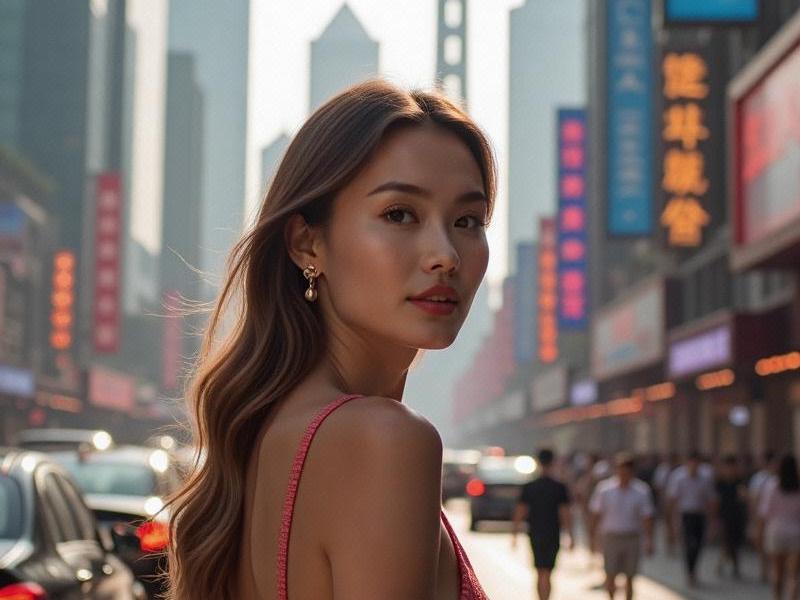Shanghai Femininity in Flux: How Global Influences Reshape Local Beauty Standards
⏱ 2025-07-07 03:19 🔖 上海龙凤419
📢0℃

Section 1: Historical Context
- 1920s: Qipao-clad "Modern Girls" of the Jazz Age
- 1950s-70s: Androgynous revolutionary aesthetics
- Reform Era: Return to femininity and luxury
- Digital Age: Social media's democratizing effect
Section 2: The Beauty Economy
• ¥87 billion annual spending on cosmetics (2024)
• 3 distinctive beauty districts:
- Nanjing Road luxury counters
- Xintiandi concept stores
- Online influencer studios
上海龙凤419贵族
• Emerging Trends:
- "Smart skincare" with AI diagnostics
- Sustainable beauty movements
- Cosmetic acupuncture revival
Section 3: Workplace Transformations
- Executive Beauty: 68% of female managers consider appearance professionally strategic
- The "Power Qipao" phenomenon in finance
- Tech sector's casual revolution
419上海龙凤网 Section 4: Generational Shifts
1. Post-90s Generation:
• Experimental street styles
• Gender-fluid fashion acceptance
• Tattoo culture emergence
2. Millennial Professionals:
• "Quiet luxury" preferences
• Work-life balance priorities
• Cosmetic surgery hesitancy
爱上海同城对对碰交友论坛 3. Silver Generation:
• Retirement style revolutions
• Square dancing fashion
• Anti-aging technology adoption
Section 5: Cultural Contradictions
- Western influences vs Chinese beauty ideals
- Body positivity movements gaining traction
- Traditional matchmaking expectations
- Feminist discourse in beauty marketing
Shanghai women continue redefining femininity on their own terms, creating a unique urban aesthetic that both reflects and challenges China's rapid modernization. Their evolving beauty standards offer a fascinating lens into the city's social transformation.
Shanghai: Where East Meets West in a Symphony of Culture, Commerce and CoutureShanghai's Beauty: A Blend of Tradition and Modernity"Satellite Cities Rising: Shanghai's 1+8 Mega-Region Blueprint Transforms Eastern China"The Shanghai Woman Paradox: How China's Global City Redefines Feminine IdentityShanghai's Paradox: Preserving Heritage While Racing Toward the Future摩登密码:上海女性的百年形象解码(1920-2025)Metropolitan Symbiosis: How Shanghai and Its Neighbors Are Redefining Urban-Rural IntegrationShanghai Entertainment Clubs: An Exclusive Look at the City's Nightlife SceneShanghai's Modern Daughters: How the City's Women Are Redefining Chinese FemininityThe Shanghai Nexus: How China's Premier Megacity Shapes the Yangtze River Delta
从四川北路到武康路:上海老马路的"时光切片"与城市记忆从弄堂木窗到陆家嘴云:上海美女的"双面人生"与城市温度【沪上拾光】石库门弄堂里的世纪交响【特写】百乐门密码:解码上海娱乐会所的百年基因梧桐年轮里的上海:老弄堂与新都市的文化共生术霓虹旧巷里的上海夜:娱乐会所的社交时光志【镜中上海】从月份牌到AI写真:都市女性形象的百年媒介革命【潮汐效应】苏州河的左岸与右岸:上海都市圈百年文化对流史格式
- 包含标题、关键词、描述、正文四部分
4. 创作方向:
- 需展现上海特色,避免与前几篇重复
- 建议聚焦2025年上海城市发展的新趋势
- 可结合科技创新、文化传承或民生改善等角度
5. 注意事项:
- 保持新闻专业性与文学性的平衡
- 数据需合理可信,案例要有代表性
- 避免低俗化或敏感内容
以下是为您创作的关于上海未来社区建设的深度报道:【摩登密码】上海街头的审美经济学

